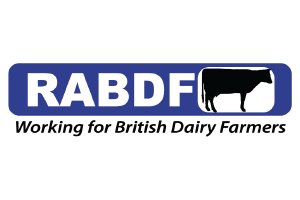Looking ahead to 2025 dairy markets look to be reasonably stable. In early spring when I’m writing this most dairy commodities are trading longer-term at similar prices to today. Milk production in the UK is rising, currently up just over 1% from the same time as last year, this scale of increase is expected to carry on throughout the coming year. While its normal to see farm gate prices stabilise or fall in the run up to and over the peak production months of April and May, one or two processors have already announced they are holding for May which hopefully bodes well for the coming season as markets are suggesting strength post peak. Remembering, global dairy markets are very finely balanced and will react to surplus production with price decreases. Locally in Cumbria the gap between the highest and lowest farm-gate milk price is about as wide as we’ve seen with many producers on commodity linked contracts 10 pence per litre or more behind the average, for these farms this is really challenging their profitability. Feed to milk price ratio is very favourable for most and is without doubt driving the extra production as is what looks like a favourable dry spring. Even though most dairy farmers are currently reasonably optimistic, its expected more dairy farmers will exit the industry in the coming year. The last figures available for the year, April 23 to April 24, we sore 5.8% or 440 dairy farms exited the industry leaving just 7130 producers in Great Britain, if this trend continues, we’ll be down to around 6000 GB produces in a couple of years, quite staggering when you consider there were around 60,000 producers when I joined our family business and started my career 40 years ago. I can’t help but think, there must be a limit to how long an industry can continually restructure without reducing supply, although it doesn’t appear to be reducing yet with output remaining robust between 14.8-15.2 billion litres annually. Challenges around the shortage of skilled labour, the cost of complying with environmental targets, and what seems like virtually zero understanding of our industry from government, can for many make dairy farming unappealing. The proposed changes to inheritance tax can only make succession more difficult in an industry that’s already struggling to entice the next generation to pull on their wellies.
Globally dairy consumption remains in steady growth and is expected to expand at a compound annual growth rate of around 4-5% through to 2030. Global population growth, increasing urbanisation and affluence in emerging markets like Asia-Pacific and Africa are driving demand as is improving cold-chain infrastructure in Africa boosting the availability of dairy to new consumers. Similar to the UK , all major dairy producing countries have sustainability challenges and environmental concerns, pushing production methods towards, precision farming, methane-reducing feed additives, regenerative farming principles and carbon reducing methods all gaining momentum. Climate change is adding uncertainty and volatility to global supply chains with huge swings from very hot and dry to very wet and cold. The extreme geopolitical uncertainty coupled with the whiplash effects of climate change are challenging the resilience of food production. Without long-term government planning and support it seems inevitable that in the UK we’re heading towards significant food price inflation, possibly even food shortages. Not a great situation considering our sluggish economy and the significant dependence already on food banks but it’s quite possible before long the most lucrative future market for UK produce could be the export market.
Livestock prices seem to be on the crest of a wave as I write this in late March, with all classes of cattle and sheep recording higher prices than I can remember. Driven no doubt by tight supplies as a direct result of the steadily declining national herd and flock numbers. This firming of prices will I’m sure will be masking the uncertainty and lack of confidence many farmers will be feeling due to the abrupt halting of the Sustainable Farming Incentive Scheme (SFI) coupled with the unexpected early withdrawal of area payments - so much for the soft landing of transition. The cynic in me thinks that’s the last we’ll see of farm support in any form with the much championed £5.2 bn over the next two years being redirected to more needy government departments. The government are now consulting on their long-awaited land use framework, and there’s more than a hint they’re intending to move towards taking land out of production in an attempt to restore nature and biodiversity. This policy assumes we can sacrifice food production in the uplands and marginal land to restore nature while concentrating efficient food production on the better land. Alarmingly it also assumes productivity gains similar to the 1970’s, when in fact cereals yields have been flatlining for several decades. All of this is quite astonishing when you consider our climatic and soils advantage and that last year the UK was more dependent on imported wheat than ever before, we only produced around 15% of our vegetable oil requirements, down from 40% a decade ago, UK potato production was at its lowest level for a decade, we’re only 53% self-sufficient in vegetables, the lowest since record began in 1988 and we produced only 16% of our fresh fruit requirements. As I write, it looks as if we’re about to stumble into a trade agreement with the US where it’s quite possible we’ll see food products sacrificed to protect our financial services, pharma and luxury car exports. So much for “Food Security is Natural Security” as it read in the Labour manifesto.
